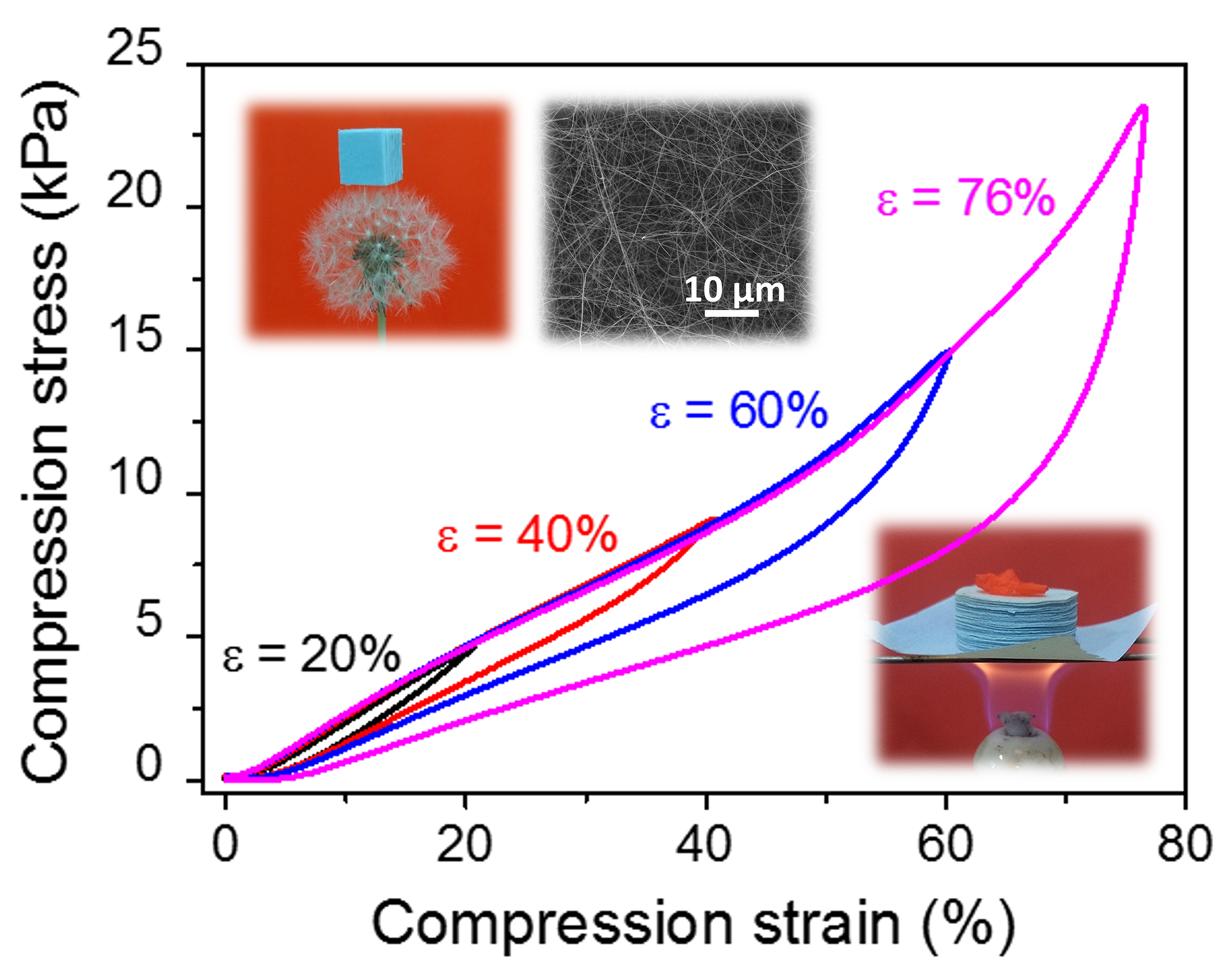Since the first report of silica aerogels by Kistler in 1930s, ceramic aerogels have been widely investigated due mainly to their low density, high porosity, large surface area and excellent thermal and chemical stability. However, conventional ceramic aerogels are usually constructed by oxide ceramic nanoparticles, and their practical applications have always been limited by the brittle nature of ceramics and volume shrinkage at elevated temperature (e.g., 600 °C for silica aerogels). As is known, the brittleness of ceramics comes from their strong ionic and covalent bonds. Therefore, efforts should be made in optimizing the microstructures of ceramics.

To achieve the compressibility of SiC ceramic aerogels, researchers from Xi’an Jiaotong University prepared a kind of highly porous three-dimensional SiC nanowire aerogel (NWA) assembled by a large number of interweaving 3C-SiC nanowires. The macroscopic-assembled SiC NWA exhibits integrated properties of ultralow density (∼5 mg cm-3), large strain (>70%) recoverable compressibility, excellent fatigue resistance (1000 cycles with a set strain of 60%), energy dissipation performance (an energy loss coefficient of 0.40), refractory performance, high-temperature oxidation and heat resistance, thermal insulation (0.026 W m-1K-1 at room temperature in N2), and high absorption capacity (130-237 g g-1) for organic solvents, showing promising potential to be used as a fireproofing material, high-temperature thermal insulator and catalyst support, and organic solvents and oil absorbents for environmental protection and sewage treatment.
The research is published in an article entitled “Ultralight, recoverable, and high-temperature-resistant SiC nanowire aerogel” on ACS Nano on March 7, 2018. The work was completed by doctoral candidate Lei Su and Prof. Hongjie Wang et al. This research was supported by the Natural Science Foundation of China (No. 51472198 and No. 51772237). The full article can be accessed with the following link:
https://pubs.acs.org/doi/10.1021/acsnano.7b08577


